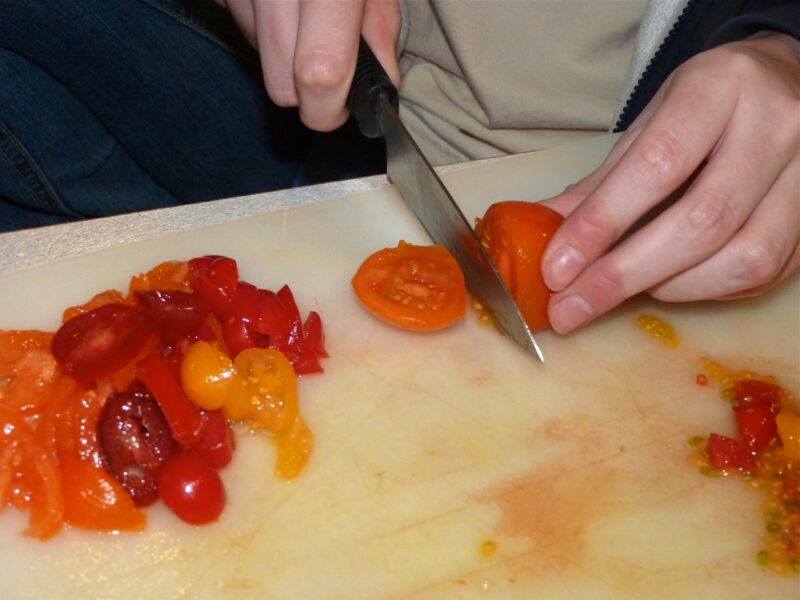
Enlarge (credit: Flickr user Normanack)
If you're anything like me, you have a set of kitchen knives so dull that you could swap the handle and the blade with no noticeable effect on your fingers. And yet these knives will still cut—you just have to saw away at that soft tomato with less downward pressure. Surprisingly, although physicists had a general idea of why sawing with a knife helps cut soft material, no one had really looked at the details. Luckily, this oversight has been corrected and you can now optimize your cutting technique using—as certain radio personalities put it—the power of science.
Too squishy to crack, too solid to flow
Gels—a tomato is a gel with a skin—fall into a funny category. A gel is a liquid (usually water), at least if you decide by volume. However, a gel doesn’t really flow, because the liquid is contained within a polymer network. You could say that a gel is a bit like a sponge: if you squeeze a gel hard enough, water will be expelled, and when you relax your grip, water will be sucked back into the network. But not all gels hold their shape if they dry out, while a dry sponge still retains its structure.
Although gels are flexible, they are still breakable. If you stretch a gel, the gel becomes strained. As long as the strain is below a certain limit, it will always return to its original shape when you stop stretching it. The maximum strain for which this is true is called the elastic limit. To cut a gel, the strain has to be above the elastic limit.
No comments:
Post a Comment